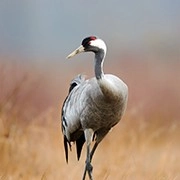Penguin Lover Must Read
Penguins are chubby animals, wobbly when they walk. They are worthy of being the darling of the aquarium. We all know that penguins are creatures living in Antarctica, and we know that they are degenerated from birds, but how much do you know about penguins? If you are a penguin lover, you must not miss this article.
When did humans first discover penguins? The history of the discovery of penguins can be traced back to the end of the fifteenth century. Their discoverers were not biologists or archaeologists, but a group of sailors from Portugal. When the sailors passed the Cape of Good Hope, they saw this black and white animal, but no one knew what it was. It was not until thirty-eight years later, when the historian Pigafetta and the Magellan fleet sailed to the Patagonian coast and saw this unknown creature again, penguins began to be recorded by humans.
Yes, penguins not only live in the Antarctic continent, but also in the temperate regions of Africa near the Antarctic, it’s just that there are fewer species, and they live in sparsely populated places. The penguins that live closest to the equator are the Galapagos penguins. Penguins outside the Antarctic make up less than a quarter of all penguin species. But the range of activities is limited to the polar regions, that is, there are only two types of penguins that can only survive in the polar regions.
In Melbourne, the picture of two little blue penguins snuggling together "shoulders and backs" touched countless people. According to the photographer, they both lost their mates, so the two little blue penguins would have appointments with each other regularly, standing together for hours, rubbing each other's backs and fins. Yes, not all penguin are only black and white as we think - the back feathers of the little blue penguin are blue, which is unique among all 18 species of penguins.
The wings of penguins are very magical. Even when swimming in such a cold place as Antarctica, they do not freeze. At first people guessed whether it was because the penguin's fat was thick enough not only to withstand the cold, but also to maintain the temperature and prevent freezing. Later, after in-depth research, scientists found that the answer was only half correct. The reason why penguins do not freeze, in addition to their fat is thick enough, more importantly, their feathers can be waterproof, this waterproof structure is also envisaged whether it can be used in the aerospace industry.
The smelly feces of penguins have also helped a lot of in the process of human discovery of penguins. Just eleven years ago, when the British were studying Antarctic glaciers, they accidentally photographed penguin feces using satellite photography. So, they followed the trail and found more than ten colonies of emperor penguins that people had never discovered before. During this exploration, they accidentally discovered the existence of more than 10,000 penguins.
In addition, scientists can also analyze where penguins once existed through penguin feces remaining in the material deposited in the ground and penguin excretion data. If you are lucky enough to obtain enough data, you can also restore the cause of the mass extinction of penguins in a certain place. The disappearance of gentoo penguins in Antarctica is analyzed in this way.

 · Animal Team
· Animal Team